Case Studies :: Enel :: Data Science for Business

Case Studies :: Enel :: Data Science for Business
If you are a SMA student enrolled in 2018/2019 please send an email to sma-dss@uniroma1.it to receive a link with the on-line registration form
1 - Introduction (September 12th)
2 - Use Case definition (September 12th)
3 - Business Engagement (September 13th)
Tech talk 1 - Productionizing Machine Learning (September 18th)
Tech talk 2 - Microservices (September 19th)
Tech talk 3 - Version control (October 3rd) (*)
4 - Agile methodology (September 26th)
5 - Data visualization and storytelling: part 1 (September 27th)
6 - Data visualization and storytelling: part 2 (September 27th)
7 - Final presentation (October 4th) (*)
Lesson 1 - Introduction
[TUITION – 2h]
- Introduction to Enel and its Business Lines
- Introduction to Data Science team and its relationships within the Organization
- Examples of DS use cases for each BLs
- How to start a new project
- Understanding Business needs / context
- Understanding available data
- Approach definition / Feasibility study
- Involved actors:
- Data scientist
- Business Translator (PM, PO)
- Development team: Data Engineer, Data Architect, DevOPS
Lesson 2 - Use Case definition
[TUITION – 1.5h]
- How to prioritize projects
- Trade-off between business value and feasibility
- Business roadmap
- Priority
- Monetization (ROI, efficiency, workload reduction)
- Data availability / Data quality
- Overview of BL data
[HANDS-ON – 0.5h]
- Students will be organized in groups. A specific Business line will be assigned to each group.
- Every group will identify one or more use case for the assigned Business Line
Lesson 3 - Business Engagement
[HANDS-ON - 1h]
- Presentation of works from each group and identification of the most important use case between the ones identified (using info from lesson2)
- The most interesting use case will be awarded
[TUITION – 1h]
- Interpretability & Business value
- Working with different business users: how to be efficient in communication with someone who don’t know anything about datascience
- Answer to the question: “Why do we have to trust you?”: how to gain trust from Business
- How to assess a model value (not only precision, recall, RMSE but also KPIs interesting for businessnon. How to evaluate a model in production environment.
- Trade off between performance and interpretability of a model
- An efficient way to explain data science solutions
- Advantages to have a model easy to understand
Tech talk 1 - Productionizing Machine Learning
[TUITION – 2h]
- Delivery of the software
- Build
- Deploy
- Release
- Testing
- Advantages of a consolidated procedure
- Continuous delivery, continuous improvement
- Environments management
- Execution environment (provisioning)
- Development, quality and production environment
- Environments modelling
- Cloud computing
- Introduction
- Cloud architectures: SaaS, PaaS, IaaS
- Differences and flexibility in cloud architectures
- Cloud computing economics (fixed costs, resources management, strategies etc..)
- Scalability
- Vertical and horizontal
- Data and services scalability
- Asynchronous communication and consistency
- Stateful or stateless services
- Caching
Tech talk 2 - Microservices
[TUITION – 2h]
- System virtualization
- VM: characteristics
- Virtualization based on containers
- Difference with system virtualization
- What is a container
- Docker
- Containers orchestration (Kubernetes)
- RestAPI
Tech talk 3 - Version control
[TUITION – 0.5h]
- Introduction to Github
[HANDS-ON – 1.5h]
- Hands-on process simulation and how to use code versioning
Lesson 4 - Agile methodology
[TUITION – 1h] (possibly with the help of ATO)
- Advantages / Differences from traditional waterfall way of working
- Who are the figures involved in an Agile room: Scrum Master, PO, stakeholder e dev team
- Ceremonies according to Agile framework: Review, retrospective, planning, refinement, stand up
- Resources allocation in an agile room
- Infrastructure set up
- Estimation of developments time
[HANDS-ON – 1h]
- Using groups created in the previous lessons, define objectives, epics, stories and backlog for the use case chosen as the most interesting in lesson 3
Lesson 5 - Data visualization and storytelling: part 1
[TUITION – 2h]
- How to present results, story-telling, how to do efficient and effective slides, how to do effective plots
Lesson 6 - Data visualization and storytelling: part 2
[HANDS-ON – 2h]
- Using the work done in previous lessons prepare a presentation for 2 different targets: business people and technical people.
Lesson 7 – Final presentation
[HANDS-ON – 2h]
- Exposition of presentations prepared during lesson 6
(*) These dates are tentative and subject to change


